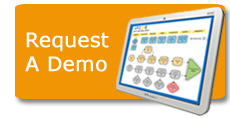What BYOD may mean for Web-to-print solutions
Many businesses have integrated Web-to-print solutions to develop marketing materials and content bound for their websites. With the growth of mobility in the modern workplace, there are more options for employees who want to bring their own devices to work.
A growing trend toward mobility
In fact, PCWorld Magazine cited a recent Gartner report that predicted 50 percent of all companies around the world would support a "bring your own device" policy by 2017. In other words, these companies will no longer be responsible for providing workers with computers or other equipment necessary to communicate with colleagues and business partners. Meanwhile, the study indicated 40 percent of global companies will enact a model that gives workers a choice of whether they wish to use their own mobile devices or existing infrastructure.
Consequently, printing solutions will likely be influenced by an increasing dependency on mobile technology. Every year, a greater number of consumers and employees use their tablets and smartphones to surf the Web, meaning the transition to using these devices for Web-to-print solutions will likely be more convenient than many in the industry expect. In fact, businesses that integrate printing software that is hosted in the cloud can be accessed by any devices that is connected to the Internet.
Weighing the pros and cons
As businesses consider whether to enact a BYOD policy, they must examine the benefits and potential drawbacks, especially when it comes to print MIS. While printing apps have been developed by printer manufacturers, many apps distort the original designs and fonts because they are limited in their capacity to customize all aspects of formatting, according to PCWorld. Mobile devices haven't been designed to accommodate printing as well as their desktop and laptop counterparts. However, Web-based printing software gives businesses a way around that problem.
Although screen sizes vary depending on the mobile device, this type of software isn't limited by the number of fonts or page sizes that a printing app has built in. The prospect of mobility and productivity with a BYOD policy is enticing for many businesses. If employees have a meeting offsite, for example, they can still provide their colleagues with documents or other printed materials that only they have access to.
Still, many IT professionals urge caution when an enterprise considers allowing its employees to use personal devices. Citing research conducted by Information Security Forum, eWeek reported most mobile devices weren't designed to be secure. Consequently, as businesses look to institute BYOD policies, they must consider what information is best kept on premises and how to fully utilize mobile devices.



